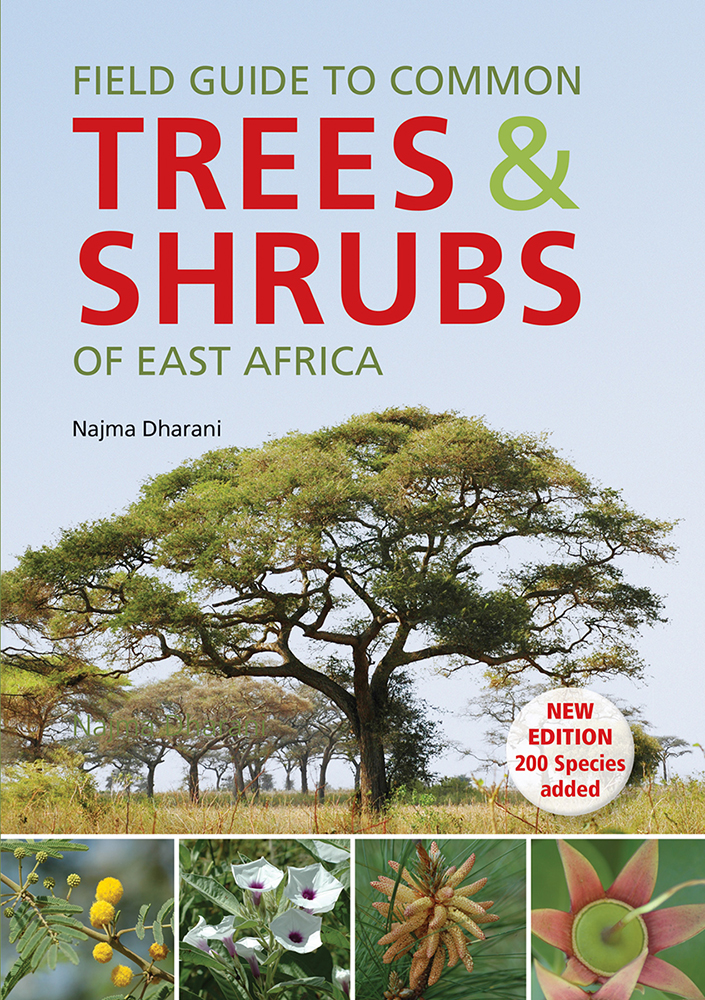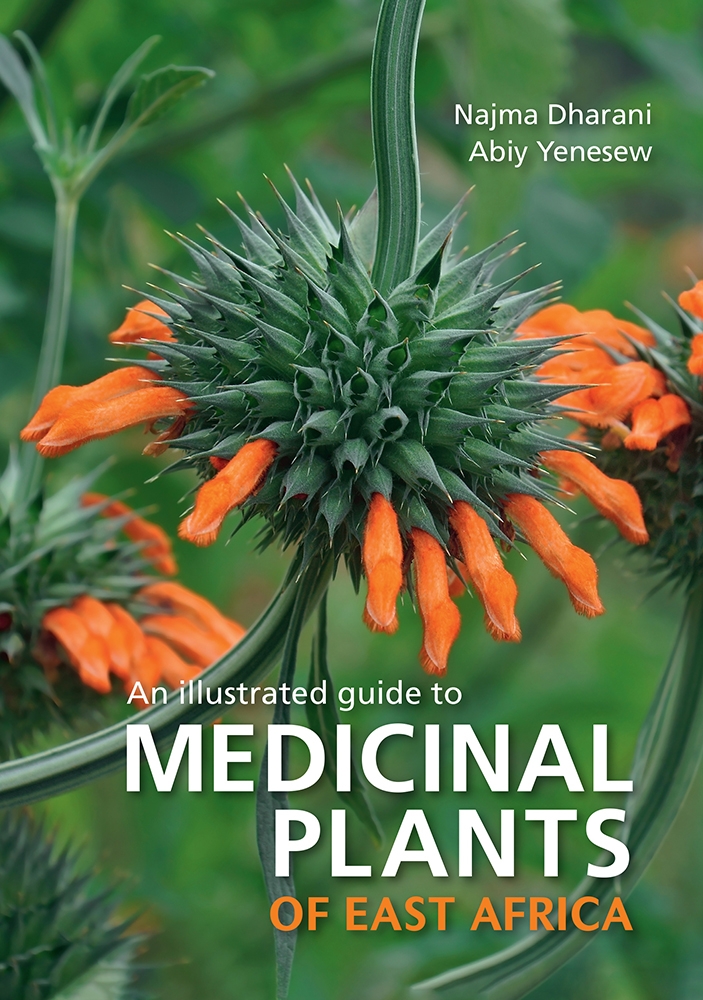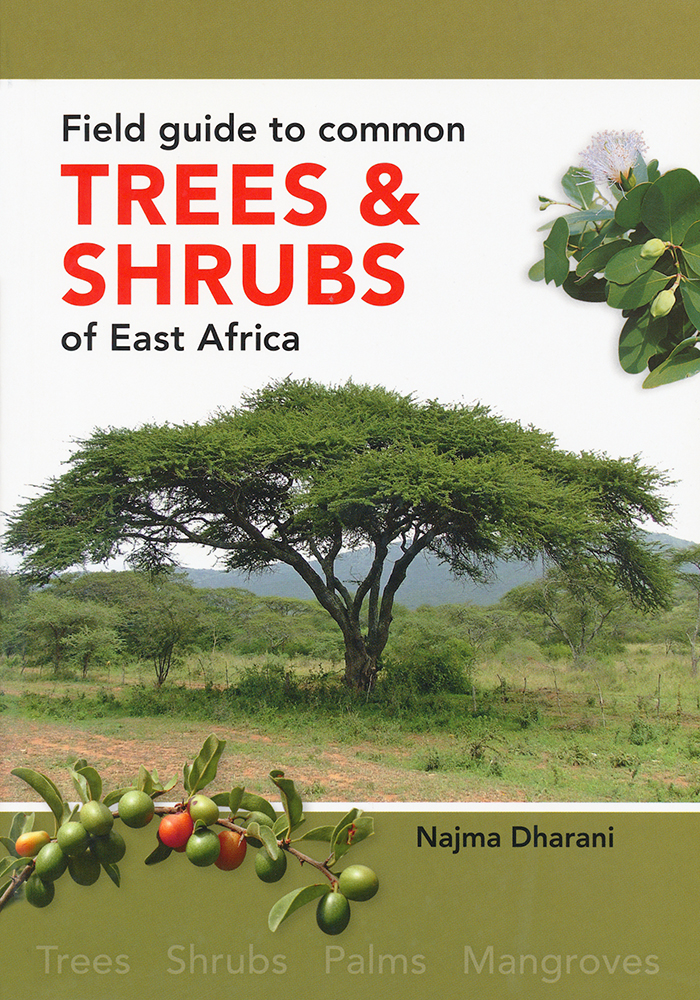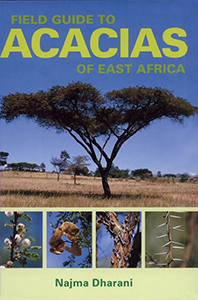Trees & Shrubs of East Africa, by Najma Dharani
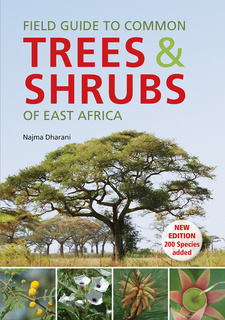
Trees & Shrubs of East Africa, by Najma Dharani. Penguin Random House South Africa. Imprint: Struik Nature. 3rd edition. Cape Town, South Africa 2019. ISBN 9781775846086 / ISBN 978-1-77007-888-8
The following excerpt from the 2019 edition of Trees & Shrubs of East Africa by Najma Dharani introduces to the medicinal use of plant parts in wide parts of East Africa.
Trees and traditional medicine in East Africa
Medicinal plants are an important part of the daily lives, and the cultural heritage, of many East African peoples. The use of plants in the treatment of various diseases, as a specific antidote against magic, and for religious ceremonies, has been an integral element of African society for centuries. The East African herbalist, often referred to as Bwana Mganga (‘Medicine Man’) is an important and highly respected figure within the society. Knowledge of medicinal plants is normally passed on orally from one generation to the next. Unfortunately, a great deal of valuable information can be lost or distorted if a medicine man dies without revealing such knowledge. In preparing these chapters, it became clear that there is a lack of detailed documentation on the significance and application of curative plants in East Africa. Such documentation is an urgent priority in view of the fragility of oral-tradition knowledge and the rapid pace of urbanization (and the consequent erosion of tribal culture) in this part of Africa.
Classification of plants
Taxonomy is a broad field of science that deals with the description, identification and naming of living organisms (in this case, plants), and their classification into groups according to their resemblance and differences, mainly in their morphology (form and structure). It contributes greatly to the orderly study and systematization of our knowledge about the subject. The word 'taxonomy' comes from two Greek words: taxis, meaning arrangement (or classification) and nomia, indicating law or custom. So taxonomy deals with the laws governing the arrangement or classification of plants. As far as angiosperms or flowering plants are concerned, it has been estimated that over 199,000 species (159,000 dicotyledons and 40,000 monocotyledons) are already known to us, and many more have yet to be discovered and recorded. Plants are therefore not only numerous but also occur in a large number of different types, and it is not possible to study them unless they are arranged according to some orderly system.
Binomial nomenclature: This is a scientific method of naming species of plants or animals in two parts (for example Acacia tortilis), the first indicating the genus and the second the species.
Units of classification
Species. A species is a group of individuals (plants or animals) of the same kind resembling one another so closely in almost all important morphological characteristics (both vegetative and reproductive) that they may be regarded as having been derived from the same parents. Occasionally, owing to variations in climatic or edaphic (soil) conditions, individuals of a species may show a certain amount of variation in form, size, colour and other minor characteristics. Such plants are said to form varieties. A species may have one or more varieties, or none at all.
Genus. A genus is a collection of species that bear a close resemblance to one another in terms of the morphological characteristics of their floral or reproductive parts. For example, the various species of fig differ from one another in terms of their vegetative characteristics, such as shape, size and leaf surface, but they are related in terms of their reproductive characteristics, namely inflorescence, floral parts, fruit and seed. Thus all figs belong to the genus Ficus.
Family. A family is a group of genera whose members share a general structural resemblance, mainly in respect of their floral organs.
Subfamily. Large families are divided into smaller groups, called subfamilies. For example, the large Leguminosae family is divided into three subfamilies: Caesalpinioideae, Mimosoideae and Papilionoideae. [...]
This is an extract from the book: Field guide to common trees and shrubs of East Africa, by Najma Dharani.
Title: Field guide to common trees & shrubs of East Africa
Author: Najma Dharani
Penguin Random House South Africa
Imprint: Struik Nature
3rd edition. Cape Town, South Africa 2019
ISBN 9781775846086 / ISBN 978-1-77584-608-6
Softcover, 15 x 21 cm, 480 pages, throughout colour photos
Dharani, Najma im Namibiana-Buchangebot
Trees & Shrubs of East Africa
This is the fully revised third edition (2019) of the field guide to common trees & shrubs of East Africa.
An Illustrated Guide to Medicinal Plants of East Africa
An Illustrated Guide to Medicinal Plants of East Africa describes 136 plant species used in Kenya, Tanzania and Uganda.
Field guide to common trees and shrubs of East Africa
This is the 2nd (older) edition of Field guide to common trees and shrubs of East Africa. It is here sold at a reduced price.
Field Guide to Acacias of East Africa
This unique field guide to Acacias of East Africa introduces all 62 of the Acacia tree species occurring in the East African region.

